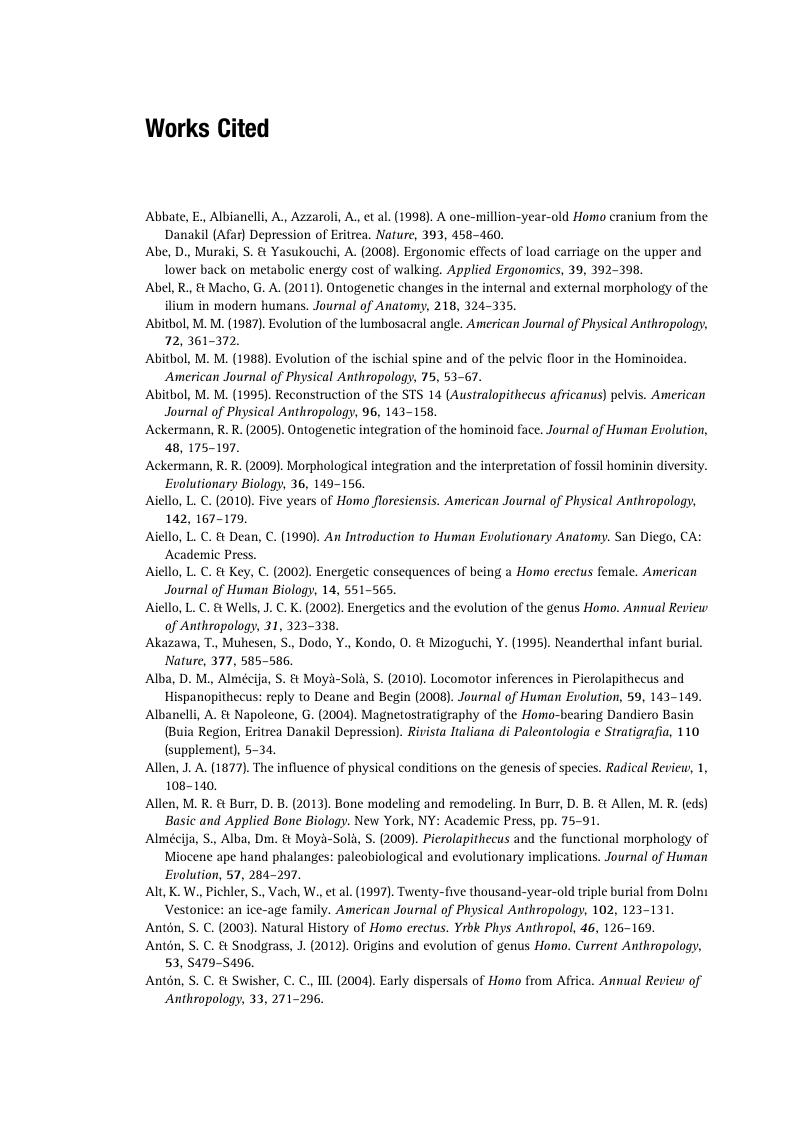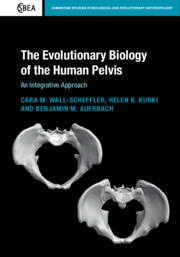Book contents
- The Evolutionary Biology of the Human Pelvis
- Cambridge Studies in Biological and Evolutionary Anthropology
- The Evolutionary Biology of the Human Pelvis
- Copyright page
- Dedication
- Contents
- Preface
- Introduction
- 1 Pelvis Anatomy
- 2 Functional Morphology of the Pelvis
- 3 Pelves of the Hominin Lineage
- 4 Developmental Biology of the Pelvis
- 5 Morphological Integration, Evolutionary Processes and Variation in the Human Pelvis
- Conclusions
- Appendix
- Works Cited
- Index
- References
Works Cited
Published online by Cambridge University Press: 30 December 2019
- The Evolutionary Biology of the Human Pelvis
- Cambridge Studies in Biological and Evolutionary Anthropology
- The Evolutionary Biology of the Human Pelvis
- Copyright page
- Dedication
- Contents
- Preface
- Introduction
- 1 Pelvis Anatomy
- 2 Functional Morphology of the Pelvis
- 3 Pelves of the Hominin Lineage
- 4 Developmental Biology of the Pelvis
- 5 Morphological Integration, Evolutionary Processes and Variation in the Human Pelvis
- Conclusions
- Appendix
- Works Cited
- Index
- References
Summary

- Type
- Chapter
- Information
- The Evolutionary Biology of the Human PelvisAn Integrative Approach, pp. 145 - 171Publisher: Cambridge University PressPrint publication year: 2020



